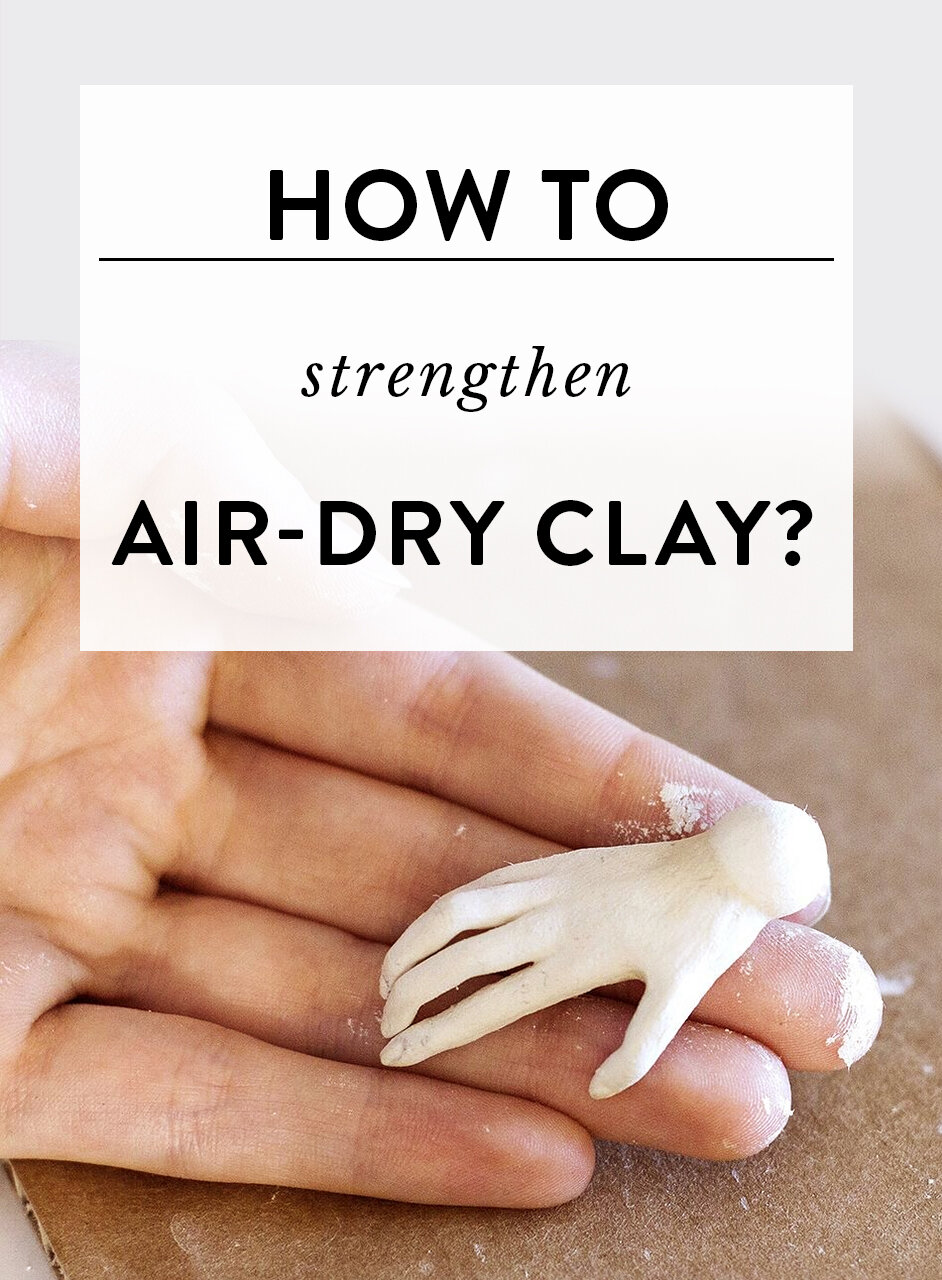If you worked with air-dry clay before, you probably noticed that sometimes it can be easily damaged. Especially if you’re sculpting very delicate pieces. I’ve been using air-dry clay for almost ten years now, and along the way, I picked up a few techniques that can help strengthen it. Keep on reading if you have this problem with your sculptures!

This post contains affiliate links and I will be compensated if you make a purchase after clicking on my links. I wouldn’t promote anything I don’t absolutely love!
For the armature, I usually use thin bendable wire and wrap it with paper painter’s tape. This technique helps when sculpting hands. Without the wire armature, the fingers, most likely, would just break off.

If you’re sculpting static sculptures or art dolls, always build a wire armature first. It will hold the air-dry clay together, and you will have a strong base to sculpt on.
Sometimes when sculpting delicate pieces, you want the clay itself to be stronger, so here’s where the PVA glue comes in! I like to use this technique to strengthen thin edges, very fragile parts like fingers or ears. PVA glue (or white Elmer’s glue) holds those tiny paper fibers firmly together when it dries. You can incorporate some PVA glue directly into the small chunk of clay and knead it. Or mix the glue with water and use this mixture instead of clear water while sculpting.
This trick makes the clay very firm and durable. It’ll be harder to sand, but it works great for most areas.
Even when dry, the air-dry clay remains prone to dents and scratches. To strengthen its surface, coat it with a few layers of primer. It works wonders forming a smooth and sturdy exterior. Unfortunately, most good-quality primers come in grey color, so it can be harder to paint the surface later. I always coat the pieces with primer if I will be making the molds later. It really transforms the surface of air-dry clay, making it smooth and firm.


Similarly, as with the primer, spray paint forms a smooth and durable coating. I find that after spraying with grey primer, you can easily cover it with white spray paint. All these layers of paint and primer will strengthen the surface of the clay.
Air-dry clay is actually quite sturdy if you make it at least 1cm (~0.4’’) thick. So if sculpting larger pieces, you can build thicker walls - do that! Sculpt in layers to ensure that it dries evenly and creates stronger bonds between the tiny fibers in the clay. And when sculpting delicate pieces, mix in some PVA glue I mentioned before!

These tips really changed how I sculpt my dolls now. I don’t remember the last time I had a broken piece. Mind you, I dropped some of them on the floor dozens of times, haha. I hope this article helps you as well! Do you have more tips on how to strengthen air-dry clay? Share them in the comments.




